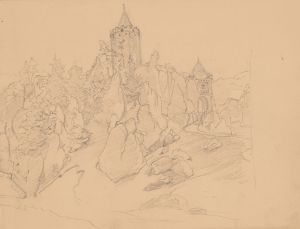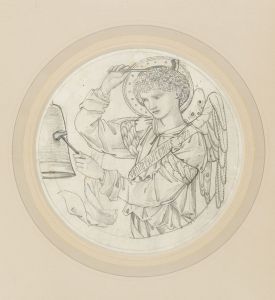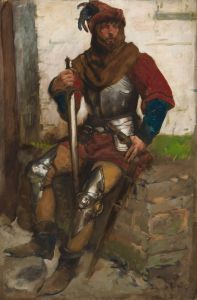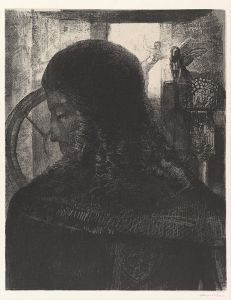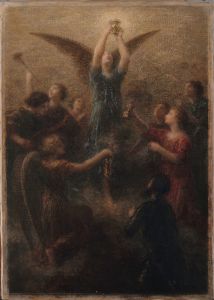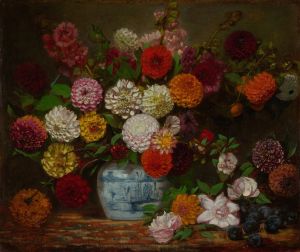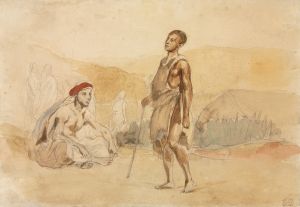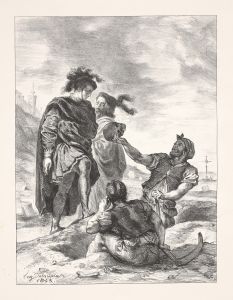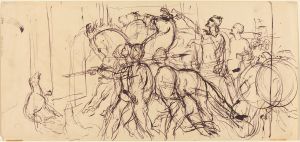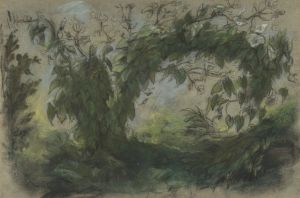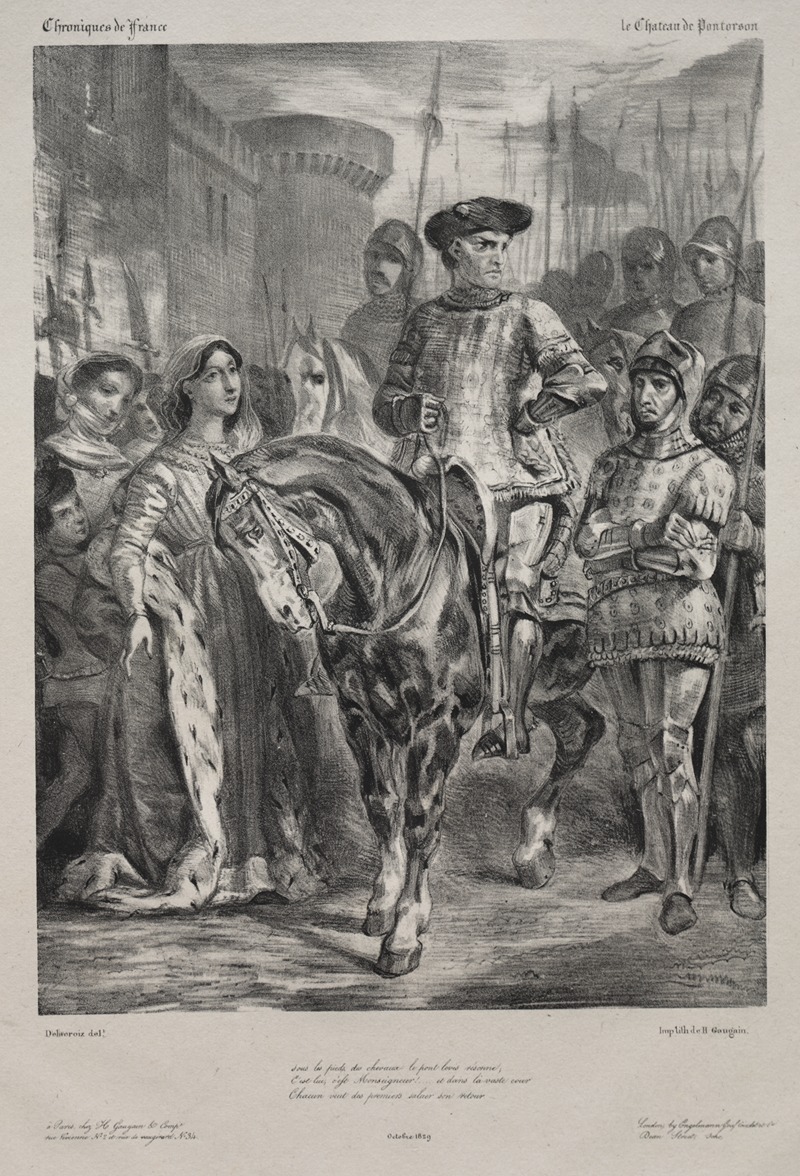
Duguesclin
A hand-painted replica of Eugène Delacroix’s masterpiece Duguesclin, meticulously crafted by professional artists to capture the true essence of the original. Each piece is created with museum-quality canvas and rare mineral pigments, carefully painted by experienced artists with delicate brushstrokes and rich, layered colors to perfectly recreate the texture of the original artwork. Unlike machine-printed reproductions, this hand-painted version brings the painting to life, infused with the artist’s emotions and skill in every stroke. Whether for personal collection or home decoration, it instantly elevates the artistic atmosphere of any space.
Eugène Delacroix, a prominent French Romantic artist, is renowned for his expressive brushwork and vibrant use of color. Among his many works, "Duguesclin" stands out as a notable piece, though it is not as widely discussed or documented as some of his other masterpieces like "Liberty Leading the People" or "The Death of Sardanapalus." Delacroix's oeuvre often drew inspiration from historical events, literature, and contemporary issues, and "Duguesclin" is no exception.
The painting "Duguesclin" depicts Bertrand du Guesclin, a celebrated French military commander during the Hundred Years' War. Known for his strategic acumen and tenacity, du Guesclin played a crucial role in the French resistance against English forces. His reputation as a formidable leader and tactician made him a subject of interest for many artists and writers of the 19th century, including Delacroix.
Delacroix's portrayal of du Guesclin captures the essence of the Romantic era's fascination with heroic figures and dramatic historical narratives. While specific details about the painting's composition and style are scarce, it is likely that Delacroix employed his characteristic dynamic brushstrokes and rich color palette to convey the intensity and valor associated with du Guesclin's character. The Romantic movement, to which Delacroix was a central figure, often emphasized emotion, individualism, and the glorification of the past, all of which are themes that align with the depiction of a historical hero like du Guesclin.
The context in which Delacroix created "Duguesclin" is also significant. The 19th century was a period of great political and social upheaval in France, with the country experiencing revolutions, the rise and fall of empires, and a growing sense of nationalism. Artists like Delacroix were deeply influenced by these changes and often used their work to comment on or reflect the spirit of the times. By choosing to depict a national hero such as du Guesclin, Delacroix may have been engaging with contemporary themes of patriotism and national identity.
Although "Duguesclin" may not be as extensively studied or exhibited as some of Delacroix's other works, it remains an important part of his artistic legacy. It exemplifies his ability to blend historical subject matter with the emotive and dramatic style that defines Romantic art. Delacroix's influence on subsequent generations of artists is well-documented, and his works continue to be celebrated for their innovative use of color and form.
In summary, while detailed information about the painting "Duguesclin" by Eugène Delacroix is limited, it can be understood within the broader context of Delacroix's artistic career and the Romantic movement. The painting reflects Delacroix's interest in historical figures and his ability to convey their stories with emotional depth and visual impact.





